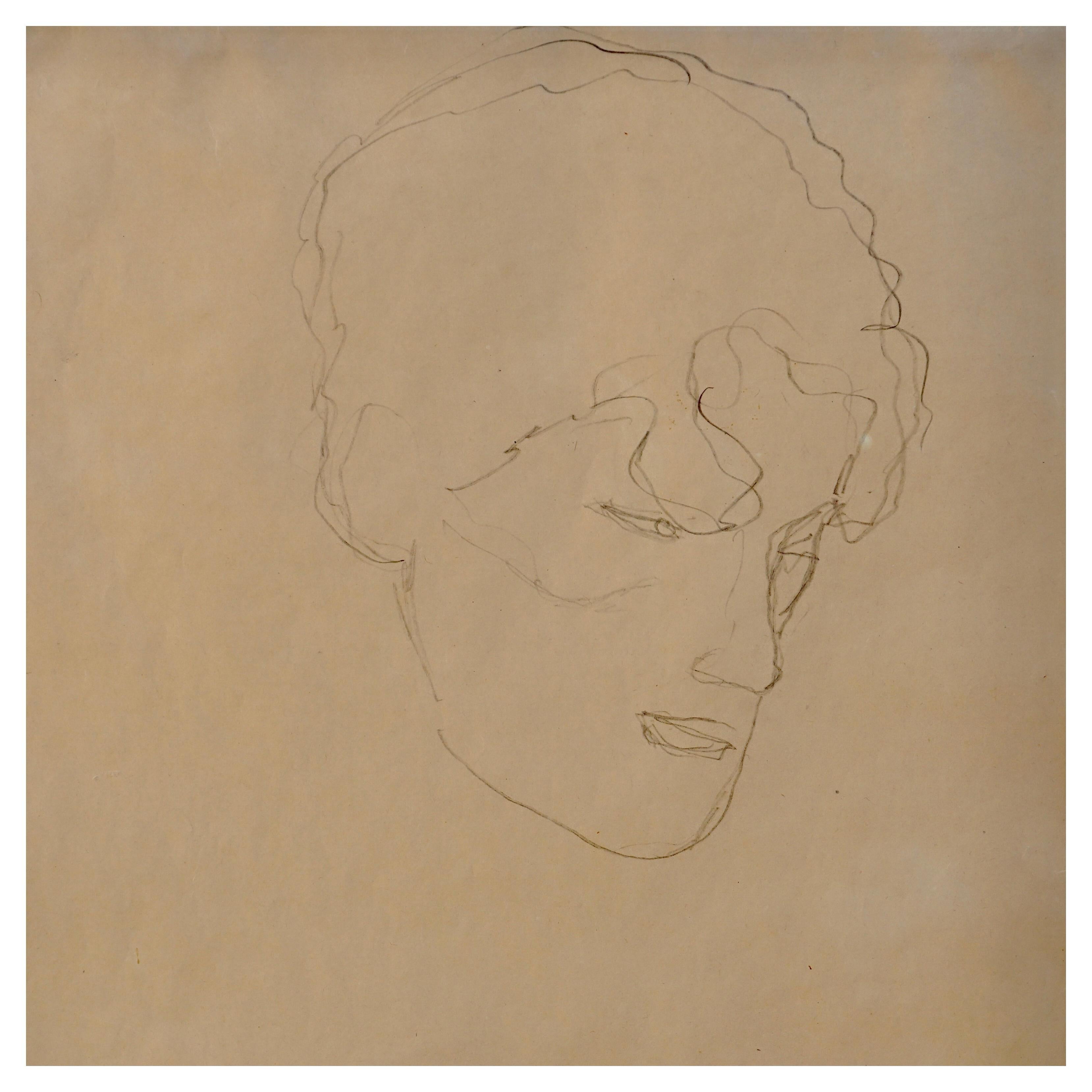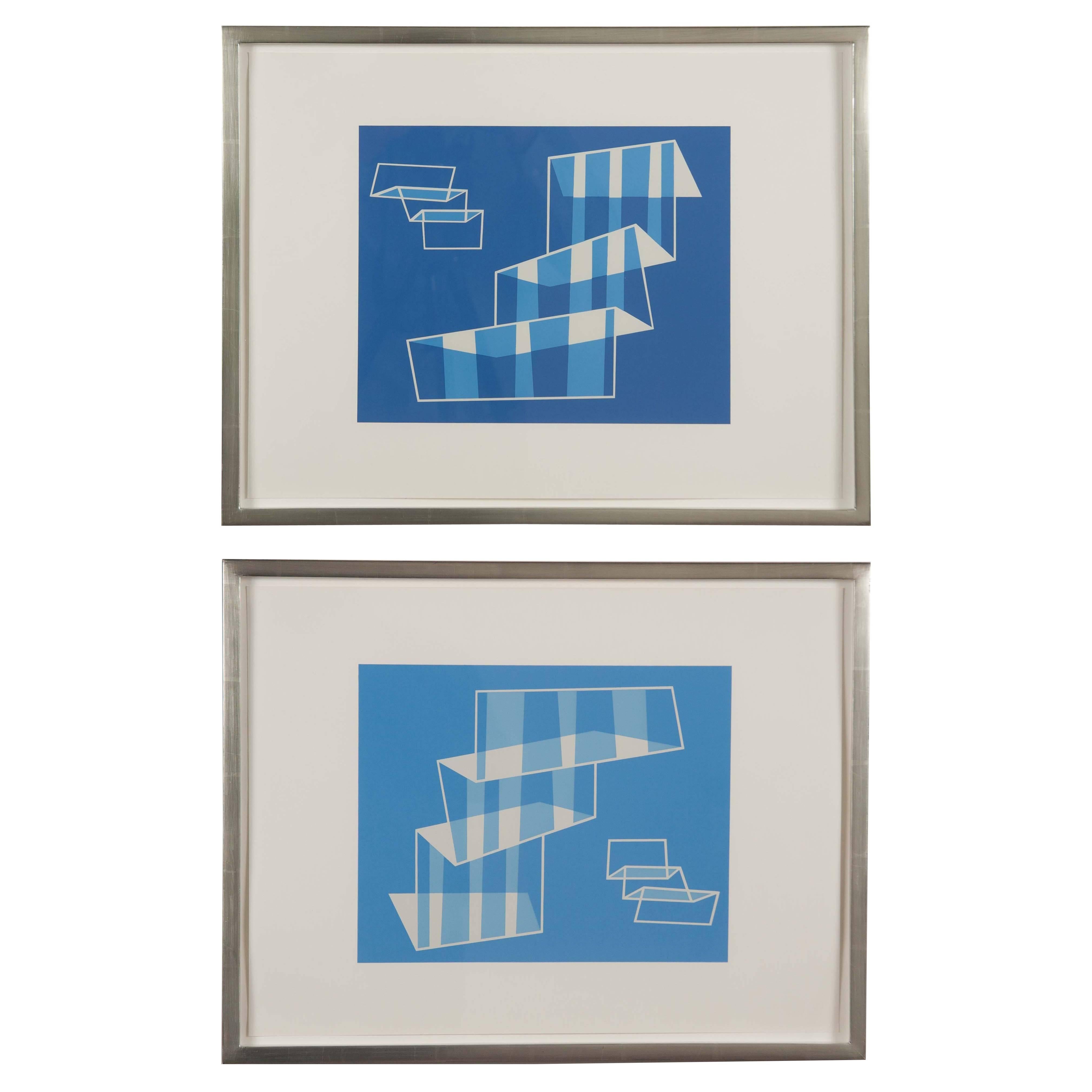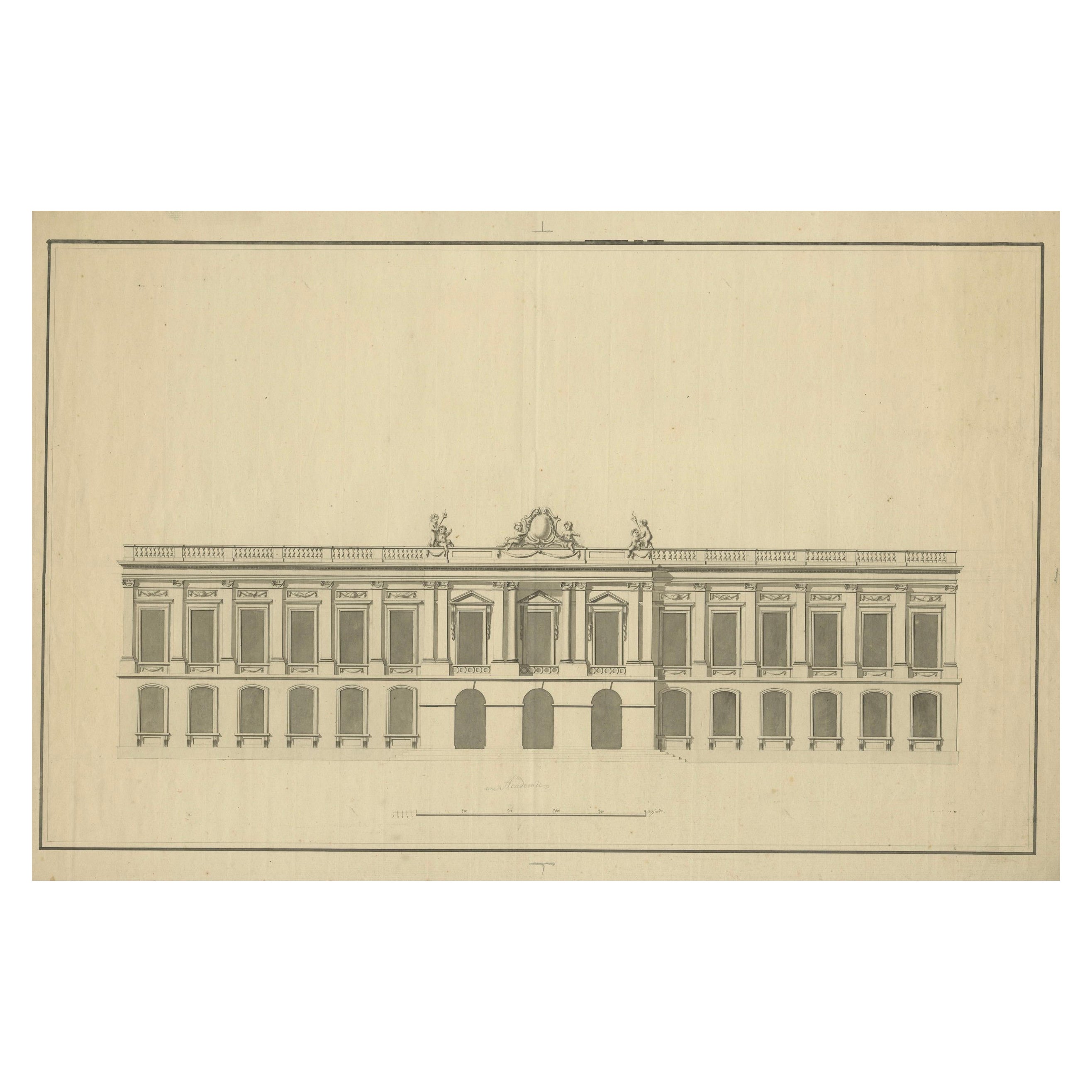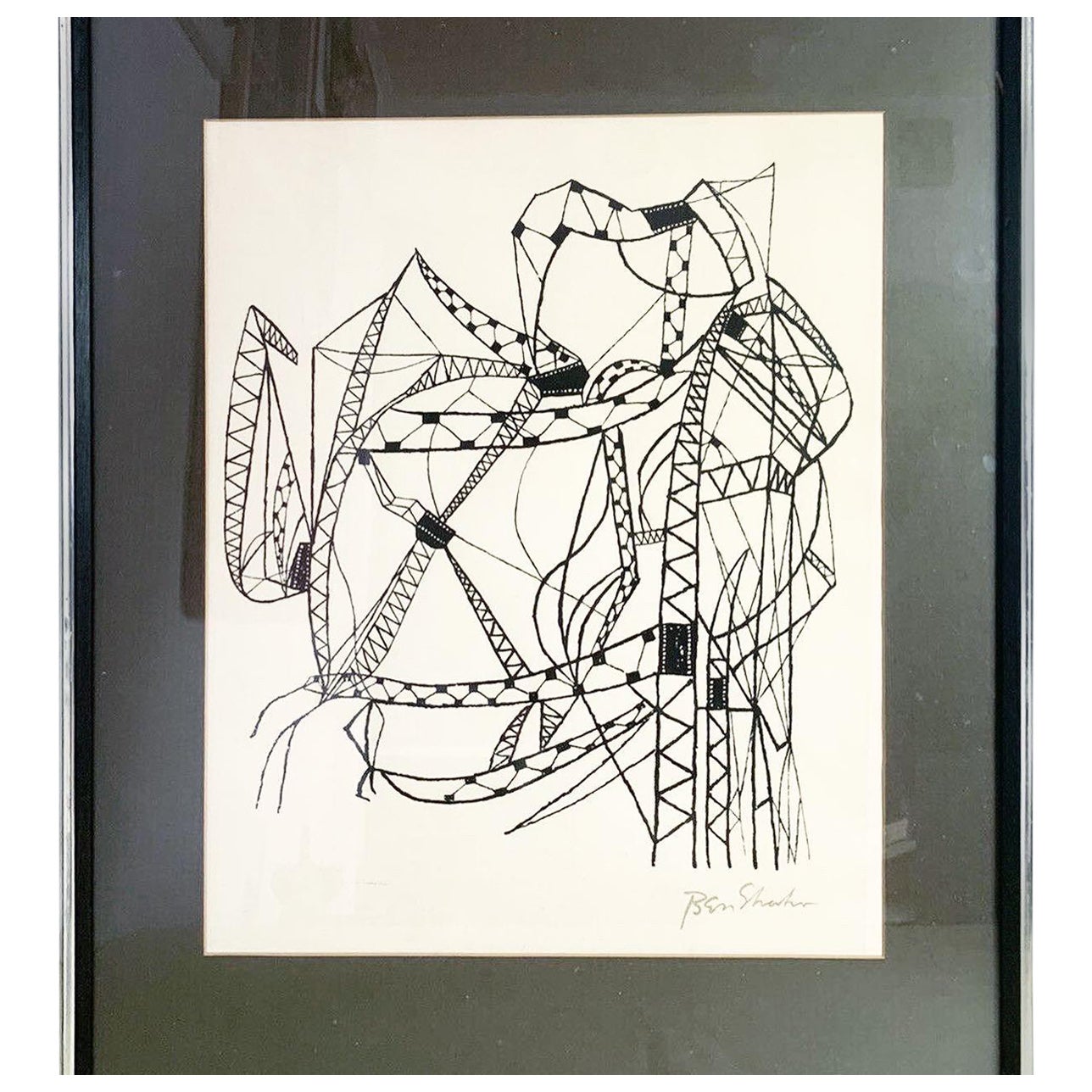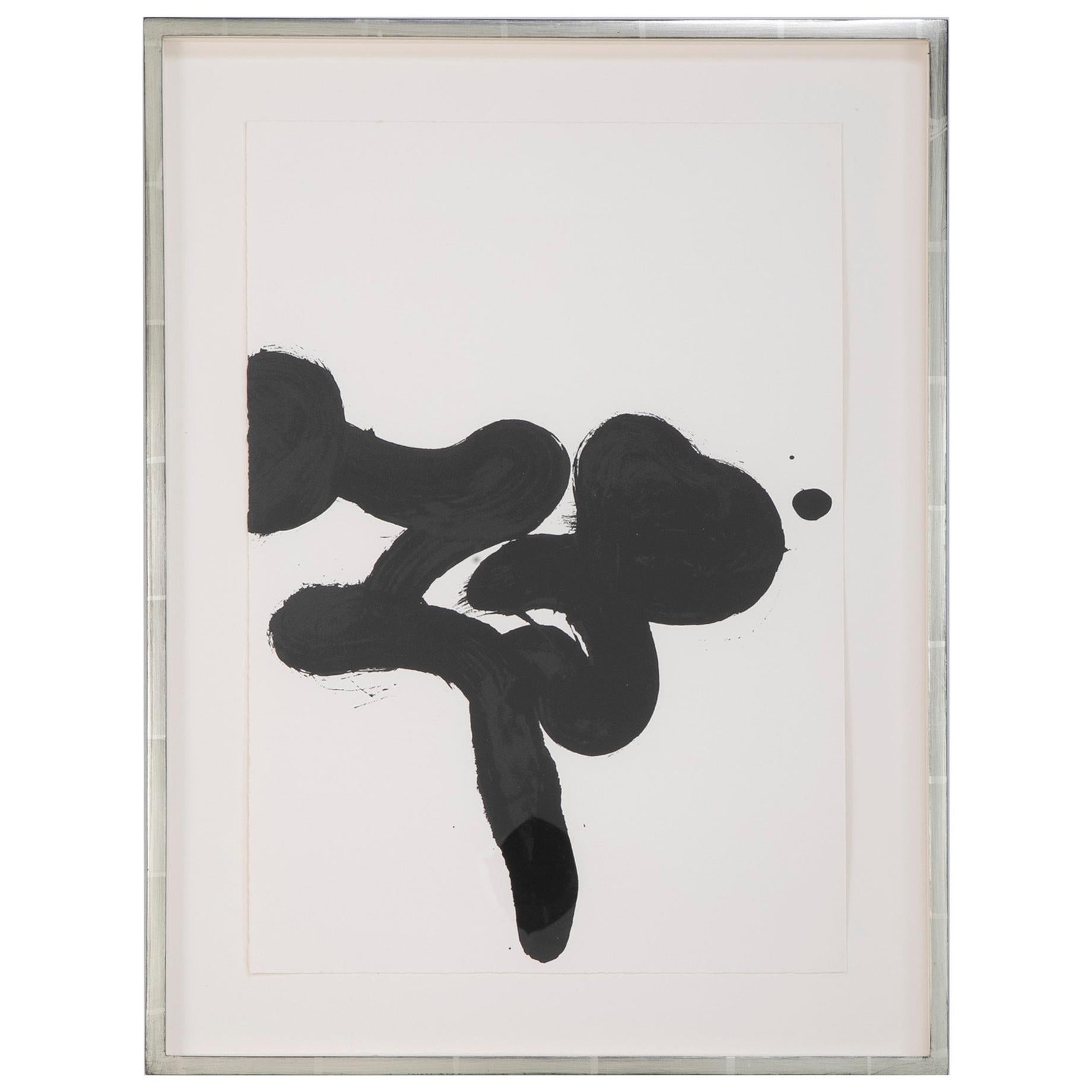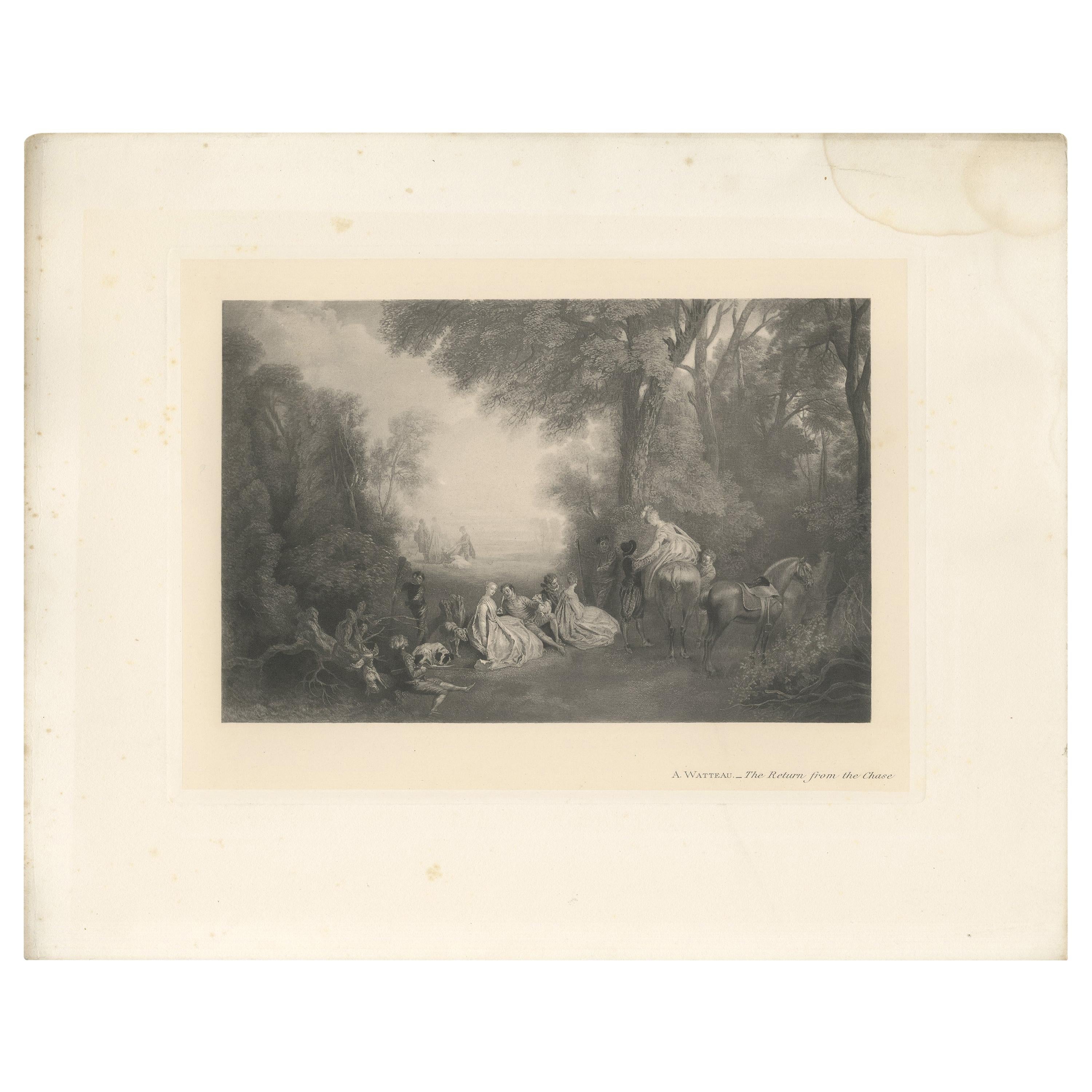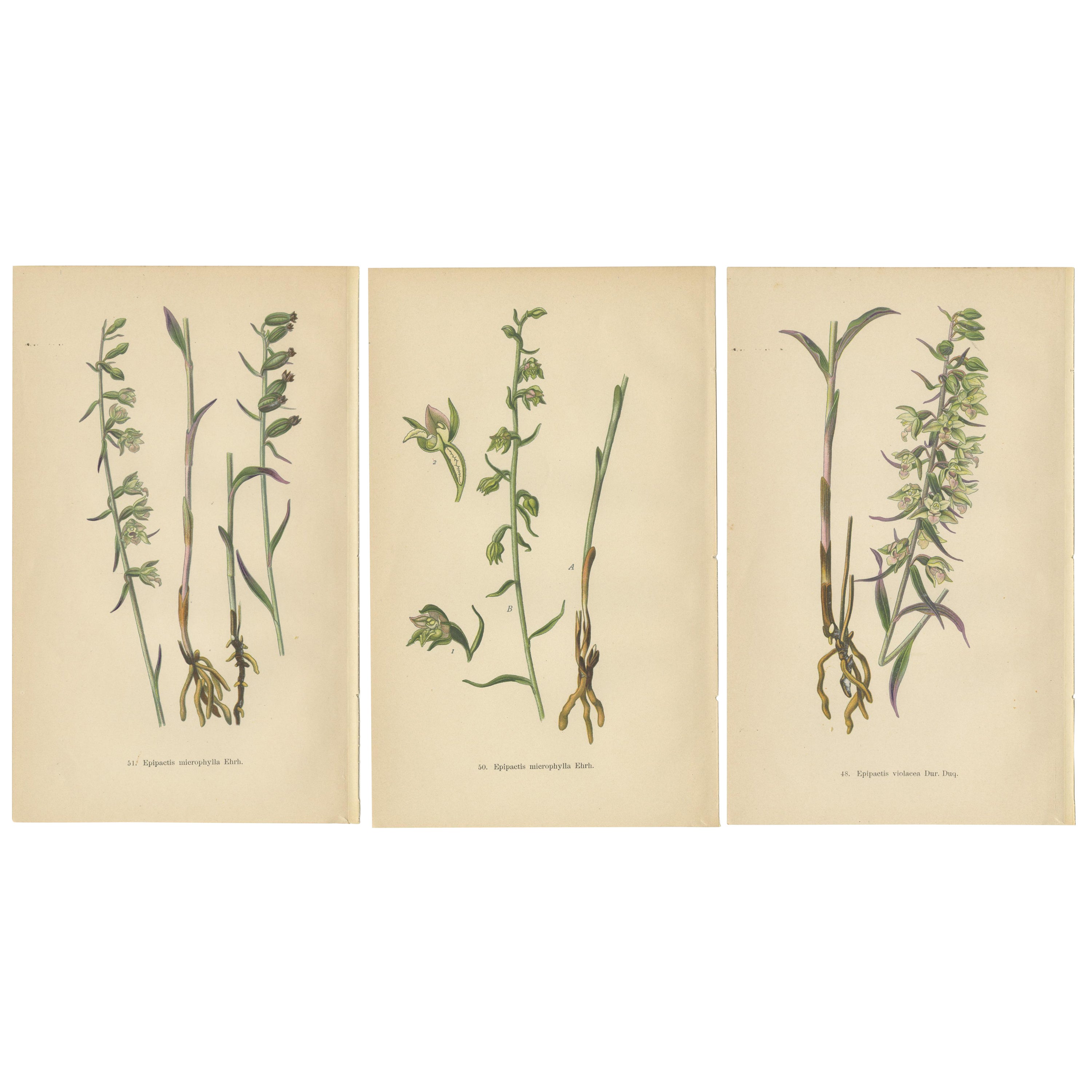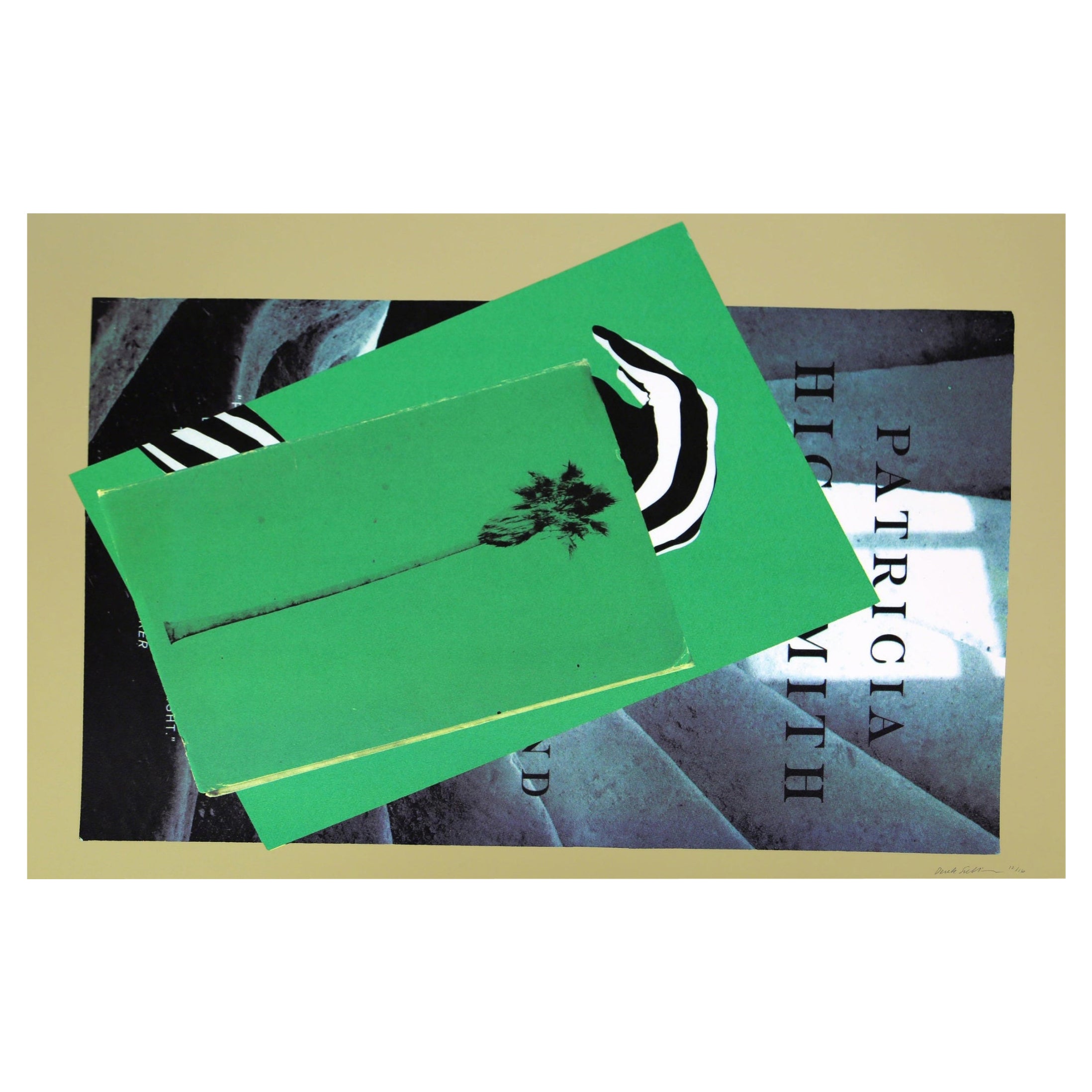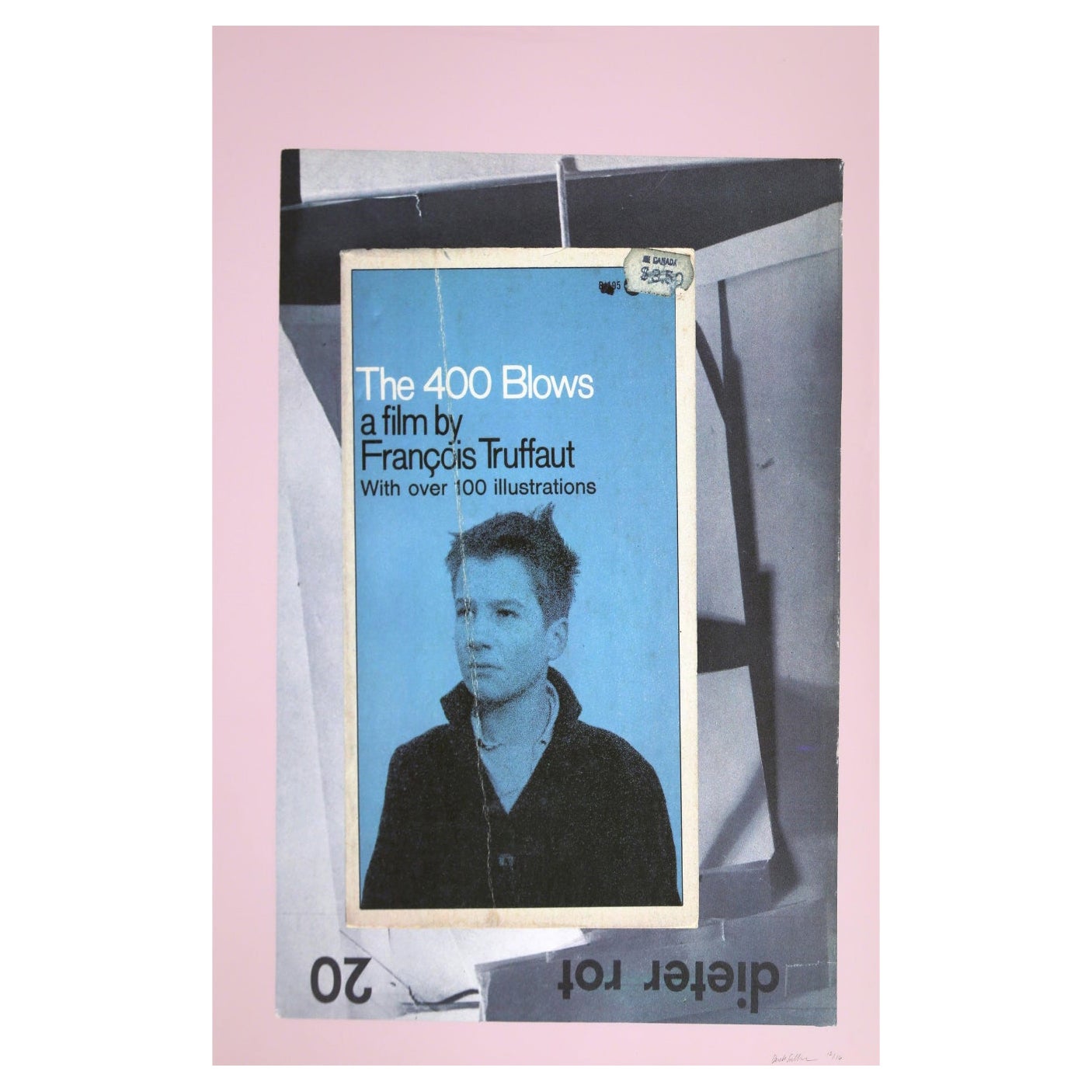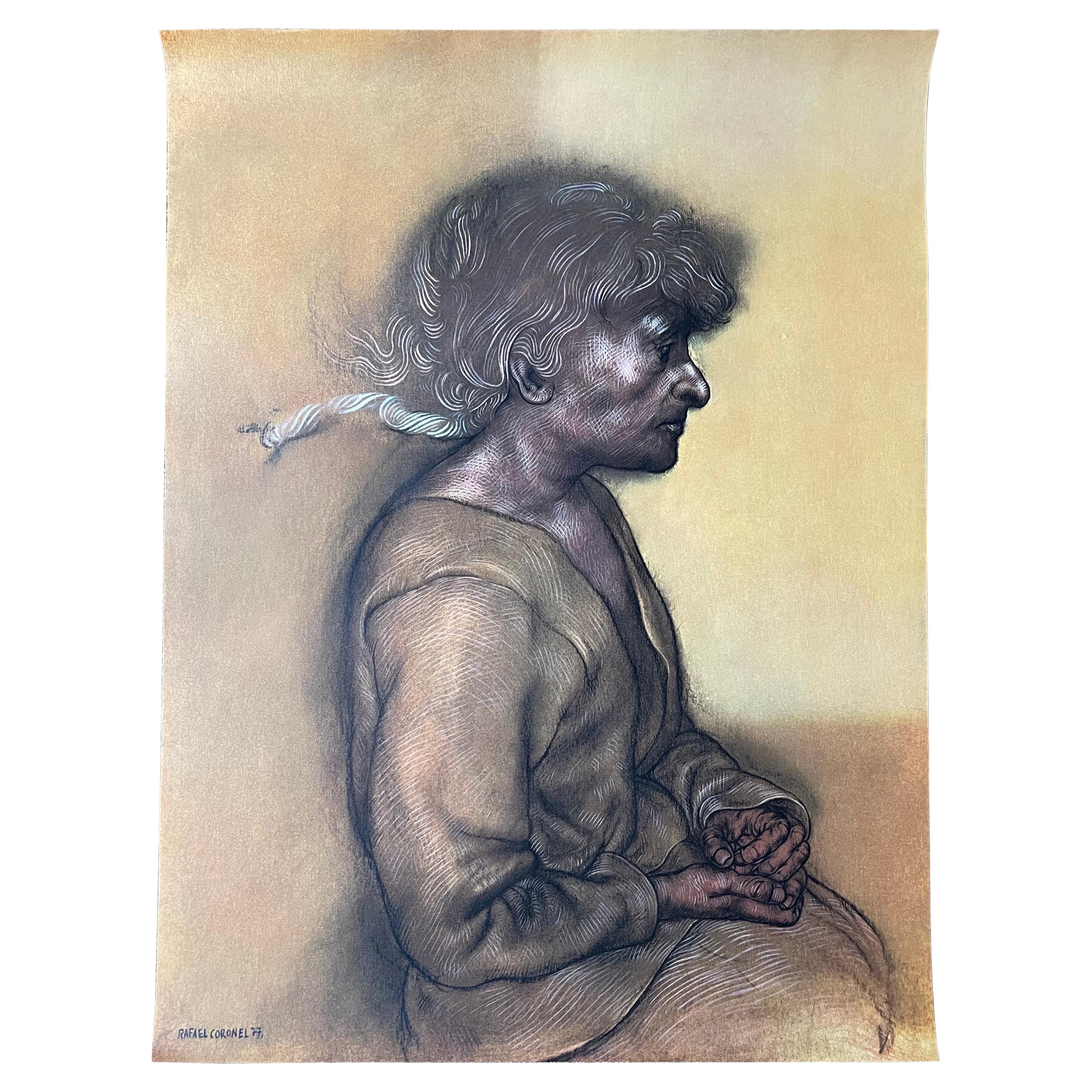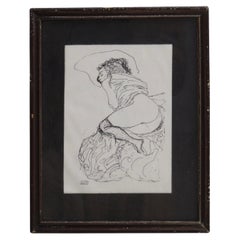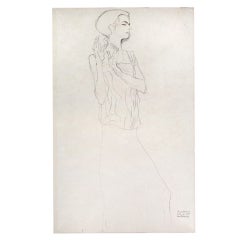
After Gustav Klimt, "Study for a Frieze", from the Portfolio Fünfundzwanzig
View Similar Items
1 of 2
After Gustav Klimt, "Study for a Frieze", from the Portfolio Fünfundzwanzig
About the Item
- Creator:Gustav Klimt (Artist)
- Dimensions:Height: 20.5 in (52.07 cm)Width: 12.88 in (32.72 cm)Depth: 0.1 in (2.54 mm)
- Style:Vienna Secession (Of the Period)
- Place of Origin:
- Period:
- Date of Manufacture:1919
- Condition:
- Seller Location:New York, NY
- Reference Number:Seller: KLG1691stDibs: U1207119051340
You May Also Like
- Gustav Klimt 'Sleeping Woman' LithographBy Gustav KlimtLocated in Philadelphia, PA- 9.75"h, 7.75"w, 0.5"d - Paper, wood frame, glass - Condition: Excellent; surface wear to wood frameCategory
Early 20th Century Prints
MaterialsGlass, Wood, Paper
- Josef Albers, from the Formulation Articulation Portfolio Priced IndividuallyBy Josef AlbersLocated in Stamford, CTJosef Albers from Formulation: Articulation, 1972. Silkscreen prints, folio 1/folder 6. Floated in while gold leaf frames using all acid free archival material...Category
Vintage 1970s American Minimalist Prints
MaterialsPaper
- Rupprecht Geiger Screen Prints from the Portfolio Titled "Zurückgehn WeitergehnBy Rupprecht GeigerLocated in Stamford, CTA group of Rupprecht Geiger screen prints from the portfolio "Go Back, Go On, Go". Twenty screen prints with texts by Helmut Heissenbüttel. Ex. from an edition of 100. Cologne, Galer...Category
Vintage 1960s German Mid-Century Modern Prints
MaterialsPaper
- Neoclassical Grandeur: An Architectural Study from the Early 1700sLocated in Langweer, NLThe engraving depicts a classical façade of a building, designed with a series of evenly spaced windows and arches on the ground floor, and rectangular windows on the upper floor. The architectural style is neoclassical, characterized by its symmetry, balanced proportions, and the use of classical elements such as pilasters and pediments. Atop the structure sits a central pediment supported by columns, flanked by statues. This could represent a public building or a grand palatial structure. The precise lines and attention to detail suggest that it was intended for scholarly study or as a record of architectural design. The labeling at the bottom, if any, could provide information on the building's location or the architect, but it's not visible in the image. The engraving is possible part of a series published around the early 18th century by Joan Blaeu, a renowned Dutch cartographer born in 1599 and who passed away in 1673. His works often featured detailed engravings of notable locations. This particular piece would have been published posthumously, as part of a collection that his heirs continued, which was later reissued by publishers like Pierre Mortier. The exact date of publication for this specific engraving is not provided in the information, but it would be within the timeframe of the early 1700s, given the dates of the reissues mentioned and the info behind the watermark that is visible if you hold the print to the light. The text appears in the paper is a historical note about the Honig family, prominent in the Dutch paper manufacturing industry during the 17th and 18th centuries. Jan Jbz. Honig (1688-1757), the white paper manufacturer from Zaandijk, was the son of paper manufacturer Jacob Cz. Honig(h) (1648-1709). Jan began his independent work in 1738 and continued until 1757. He was the younger brother of Cornelis Jbz. Honig (1683-1755), and together they started the company C & J HONIG in 1709. Following a division of the family business in 1738, Jan took over the mill 'De Vergulde Bijkorf' and also acquired the mill 'De Eendracht'. He was married to Trijntje Claes Caescoper (1689-1763) and operated with his son Jacob Jsz. Honig (1712-1780) under the name J(an) HONIG & ZOON. Around 1741, this firm produced Pro Patria paper featuring the emblem of the Hollandse Tuin as a watermark. By 1764, under the direction of his son Jacob, J. HONIG & ZOON supplied paper to the Amsterdam Chamber of the Dutch East India Company, using watermarks including the Amsterdam coat of arms...Category
Antique Early 18th Century Prints
MaterialsPaper
- Many Cities from the Rilke Portfolio, Framed Lithograph by Ben Shahn 1968Located in Delray Beach, FLArtist: Ben Shahn, American (1898 – 1969) Title: Many Cities from the Rilke Portfolio Year: 1968 Medium: Lithograph on Richard de Bas, signed in the plate Edition: 003 Size: 20 x 16 ...Category
Vintage 1960s American Modern Prints
- Victor Pasmore Etching from "The Dance of Man In Modern Times Portfolio"By Victor Pasmore 1Located in Stamford, CTAn etching and aquatint by Victor Pasmore from his portfolio titled "The Dance of Man in Modern Times". Victor Pasmore was one of the leading members of the English school of Abstract Expressionism. Please note this is one print from a larger portfolio. Other prints from this portfolio are available. A bit about Pasmore- Beginning in 1947, he developed a purely abstract style under the influence of Ben Nicholson and other artists associated with Circle, becoming a pioneering figure of the revival of interest in Constructivism in Britain following the War. [6] Pasmore's abstract work, often in collage and construction of reliefs, pioneered the use of new materials and was sometimes on a large architectural scale. Herbert Read described Pasmore's new style as "The most revolutionary event in post-war British art".[7] In 1950, he was commissioned to design an abstract mural for a bus depot in Kingston upon Thames[8] and the following year Pasmore contributed a mural to the Festival of Britain that promoted a number of the British Constructivists. Pasmore was a supporter of fellow artist Richard Hamilton, giving him a teaching job in Newcastle and contributing a constructivist structure to the exhibition "This Is Tomorrow" in collaboration with Erno Goldfinger and Helen Phillips...Category
Vintage 1970s English Modern Prints
MaterialsPaper
